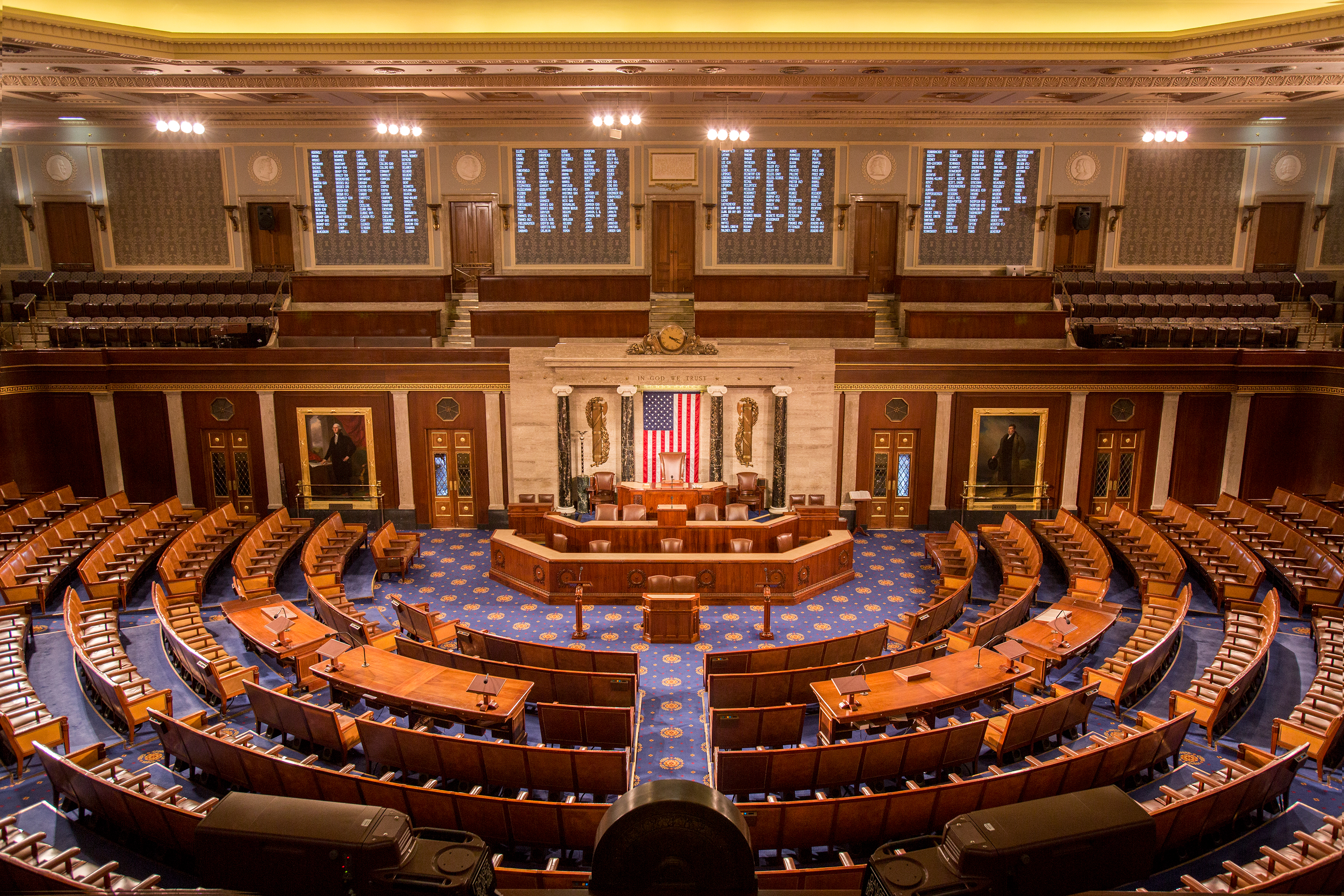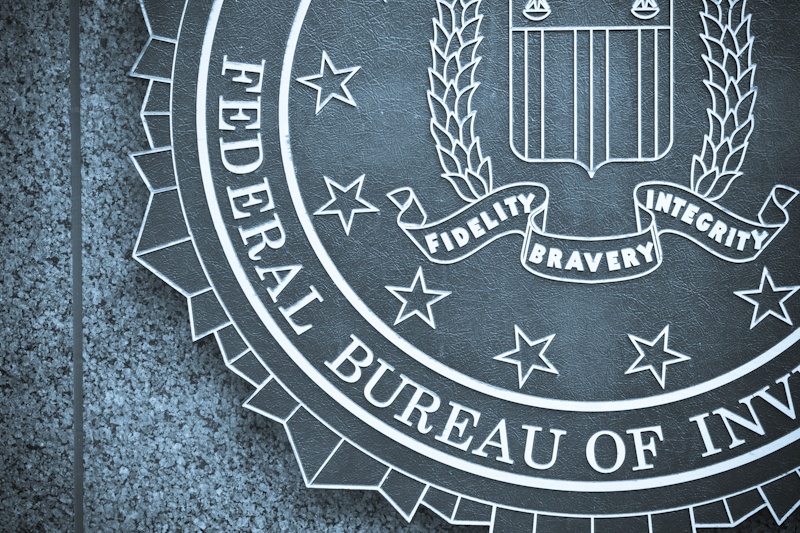The Federal Bureau of Investigation and Foreign Intelligence Collection
While the intelligence community is adept at collecting foreign intelligence outside the U.S., it does not neatly address how to exploit domestic foreign intelligence, largely due to conflicting narratives within the community. This needs to be rectified going forward.

Published by The Lawfare Institute
in Cooperation With

Foreign intelligence is present both abroad and domestically. While multiple elements of the U.S. intelligence community (IC) focus on collecting foreign intelligence—in all its forms—outside the U.S., the setup of the IC does not neatly address how to exploit foreign intelligence in the domestic setting. This is a significant failing, since the U.S. has a home-field advantage for collecting data that can provide U.S. decision-makers with a unique informational advantage. The FBI is positioned to address this deficiency. To do so effectively, however, it must come to terms with two internal, competing narratives about its intelligence role, both of which are deeply entrenched in the bureau’s history.
The concept of “foreign intelligence” is subject to multiple interpretations. As defined in the original version of Executive Order 12333, foreign intelligence is “information relating to the capabilities, intentions and activities of foreign powers, organizations or persons, but not including counterintelligence except for information on international terrorist activities.” It is too facile—and dangerous—to take a strictly geographic approach of domestic versus foreign. In 1946, even before the establishment of the modern IC, then-FBI Director J. Edgar Hoover cautioned that “the powers that be think it practical to divide domestic & foreign intelligence. Such a move will create a ‘Pearl Harbor’.” As history, specifically the intelligence failure that resulted in September 11, has shown, Hoover was not wrong about the danger that division created. The U.S. government has chosen to adopt a definition that focuses on substance rather than location. Executive Order 12333, even as amended, defines foreign intelligence as “information relating to the capabilities, intentions, or activities of foreign governments or elements thereof, foreign organizations, foreign persons, or international terrorists,” which is largely consistent with the original version of the order. Such information need not be located abroad. Collection of domestically derived foreign intelligence is a challenge for the IC.
Counterintelligence—a field in which the FBI has a well-established legacy and primacy by policy—is a subcategory of foreign intelligence. As defined by the Office of the Director of National Intelligence’s (DNI’s) National Counterintelligence and Security Center, counterintelligence focuses on identification, deception, exploitation, disruption and protection against foreign-sponsored threat activity including espionage. Therefore, the discipline of counterintelligence contributes foreign intelligence information by providing glimpses of foreign actors’ collection and influence objectives, which, in turn, help U.S. decision-makers to extrapolate insights about adversaries’ and competitors’ capabilities (based on the gaps they are attempting to fill through collection) and policy objectives (based on their efforts to shape U.S. decision-making in furtherance of preferred international environment).
As the United States’ primary domestically oriented intelligence service, the FBI is the appropriate agency to collect domestically present data that will provide policymakers with an informational advantage. The executive branch has created space for the FBI to engage in the collection of foreign intelligence information domestically. Executive Order 12333 explicitly assigns the bureau to “coordinate the clandestine collection of foreign intelligence collected through human sources or through human-enabled means and counterintelligence activities inside the United States.” Consistent with this, the Attorney General’s Guidelines for Domestic FBI Operations further confirm the bureau’s foreign intelligence responsibilities. The legislative branch, via the National Security Act of 1947, secures a role for the FBI in the modern intelligence community. By not providing a definition of foreign intelligence, the act seemingly cedes collection of all material domestically, including foreign intelligence, to the FBI.
The FBI’s law enforcement function coincides neatly with the collection of foreign intelligence information domestically. In the context of foreign intelligence, law enforcement takes the form of counterespionage—the identification and disruption of spying—which is a subset of counterintelligence and, ultimately, of foreign intelligence. There is, however, an inherent danger to this law enforcement function. Focusing too closely on reactive, investigative functions—which can yield gratifying results of arresting spies or expelling intelligence officers from the U.S.—can detract from the collection of non-counterintelligence-derived foreign intelligence. Counterespionage provides only a sliver—albeit an important one—of the foreign intelligence information obtainable domestically.
Although the FBI is the best agency for handling the collection of foreign intelligence information present in the domestic setting, it has not always been postured to fulfill this function adequately. Conflicting narratives are largely to blame for muddling a consistent effort to use the bureau area for foreign intelligence collection that could provide U.S. decision-makers with an informational advantage. One such narrative treats the collection of foreign intelligence information as a distinct objective. Another narrative, however, treats foreign intelligence as merely a by-product of the bureau’s reactive, investigatory functions—effectively undercutting efforts to achieve a fully realized foreign intelligence collection mission.
The FBI has a long history of collecting foreign intelligence information from domestic sources. For example, from 1940 until 1947, the bureau operated its Special Intelligence Service (SIS), the United States’ first civilian intelligence service to work abroad. This endeavor attuned the FBI to the concept of foreign intelligence. As part of its mission, the SIS answered intelligence requirements by collecting and disseminating information to support the operations of multiple U.S. agencies responsible for policymaking. For instance, it reported all information it acquired regarding Latin America directly to the State Department.
Although the FBI’s geographic jurisdiction was limited by the National Security Act of 1947, it continued to identify and exploit opportunities to collect foreign intelligence information. One example of this was the FBI’s SOLO operation—which provided access to high-level Soviet decision-makers—on which it levied requirements directed at obtaining “national intelligence,” information which the bureau characterized as relevant to “formulating national security policy of the U.S.” The FBI also acknowledged that the presence of foreign diplomatic establishments on U.S. soil yielded opportunities to develop “positive intelligence information which might assist the Government in formulating policy.”
The FBI made foreign intelligence collection a formal component of its post-9/11 collection activities. In May 2006, the DNI instructed the bureau to collect foreign intelligence against the National Intelligence Priorities Framework (NIPF). The NIPF consists of intelligence topics approved by the president and assigns priorities to countries and non-state actors relevant to the approved intelligence topics—pursuant to the National HUMINT (human intelligence) Collection Directive (NHCD). The NHCD is an integrated interagency mechanism for tasking human intelligence requirements to members of the intelligence community that have the best capability and probability of acquiring that information at the least cost and least risk. In response, the FBI established a dedicated Foreign Intelligence Collection Program (FICP). As the FBI advised Congress in 2009, the bureau “must acquire the capacity to establish and carry out a positive foreign intelligence collection and reporting effort that allows the FBI to be responsive to taskings received by the [DNI].” While the FBI had collected foreign intelligence for decades, this was the first time that it would have a component focused solely on the issue.
This progression toward a full-fledged capability for dedicated collection of foreign intelligence, however, is downplayed by the bureau’s typical reactionary response—diminishing the bureau’s unique capability to provide other government agencies with an informational advantage. Hoover, speaking to Congress in 1965, provided some insight into the FBI’s thinking, saying that the agency’s “primary responsibility ... is a counterintelligence nature. At the same time, however, a great deal of positive intelligence information is produced from our investigations and sources.” Nearly a decade later, a bureau official noted that one value of counterintelligence was “the large amount of straight intelligence obtained as a byproduct by counterintelligence agents in the normal course of their business.”
Following the introduction of the FICP, the FBI reorganized how it allocated resources. The Threat Review and Prioritization (TRP) process, which it began developing in 2010 and introduced two years later, was poised to further relegate foreign intelligence to by-product status. FBI headquarters uses the TRP process to determine the bureau’s National Threat Priorities (NTPs). Field offices use the outcomes of the headquarters prioritization process to conduct their own iteration of the TRP process and allocate resources toward NTPs, as well as other threat issues. As described by the FBI, the TRP process “allows FBI headquarters to gain an understanding of threats within each field office’s area of responsibility and the distribution of threats across the domestic landscape.” The process is directed at developing mitigation strategies to counter the identified threats. By focusing on threats, however, the TRP process may not afford the bureau with the incentive or resources to look beyond immediate concerns to exploit opportunities for collection of foreign intelligence in the service of longer-range policymaking.
These conflicting philosophies and the focus on immediate threats produce confusion and may result in lost opportunities regarding foreign intelligence collection. No other agency is coming to the rescue. The CIA has only a limited capacity for domestic operations, in the form of its National Resources Division. Therefore, it is incumbent on the FBI to ensure enough organization to fully exploit the foreign intelligence information present domestically. One aspect of organization is refinement of internal processes—for example, the TRP process—to incorporate foreign intelligence collection as an objective. A second step toward effective domestic collection of foreign intelligence entails the FBI’s coordinating interagency coverage through its capacity as the domestic representative of the DNI.
In refining the TRP process, the FBI should start with requirements. Rather than using headquarters-formulated NTPs, the TRP process should cascade from the NIPF, thereby aligning it with the rest of the intelligence community. This would build on one of the process’s existing elements: The Directorate of Intelligence at FBI headquarters manages the process. The Directorate of Intelligence is positioned to ensure that foreign intelligence is incorporated into the TRP process, since the directorate is also responsible for accepting intelligence requirements, authorized by the DNI, on behalf of the FBI.
The FBI, in its capacity of coordinating intelligence in the domestic setting, has had a lengthy, and at times contentious, relationship with the intelligence community. In 1964, the FBI and the CIA developed “ground rules” for coordination between the two agencies, which they refined in a set of 1966 guidelines. As the FBI noted, both agencies had an interest in the clandestine development of positive intelligence and there was a necessity for a “clear cut understanding” of jurisdiction and coordination. Foremost among these guidelines was a provision that made the FBI a gatekeeper for the collection of foreign intelligence, stipulating that the “CIA will not initiate an investigation of any foreign official in the United States without the concurrence and coordination of the FBI.” If the CIA did handle agents in the U.S., it was supposed to “service FBI security or counterintelligence requirements.”
CIA-FBI coordination on foreign intelligence collection continued to evolve after the development of the 1966 guidelines. According to a 1982 CIA document titled “Guidance for CIA Activities Within the United States,” and attached appendices, CIA foreign intelligence collection activities conducted within the U.S. are supposed to be coordinated with the FBI in accordance with Executive Order 12333. A 2005 CIA-FBI memorandum of understanding (MOU) provided updated guidance. One objective was to ensure that the two agencies were not working at cross purposes and had knowledge of whether their counterpart had already debriefed or recruited a source. In developing the MOU, the FBI initially insisted on controlling all of the CIA’s domestic activities, including the agency’s U.S.-based assets. Ultimately, the MOU reaffirmed the need for the CIA to coordinate its operations with the FBI and ensured that the CIA’s National Resources Division provided the FBI with more information about operations and debriefings.
The DNI issued the intelligence community’s Directive (ICD) 402, “Director of National Intelligence Representatives,” in 2009. The Domestic Director of National Intelligence Representative (DDNIR) program is an opportunity for the FBI to further coordinate the systematic collection of foreign intelligence domestically. DNI representatives play a significant role in integrating the IC components within their respective areas of responsibility. Specifically, they are tasked with leading the IC effort to integrate intelligence support by acquiring, maintaining, and appropriately sharing knowledge of relevant IC activities, including intelligence or intelligence-related agreements, arrangements, or exchanges; ensuring active collaboration among IC elements; assisting IC elements’ representatives in implementing their responsibilities; and evaluating the quality of IC support, including recommending to the DNI or his or her designee modifications to IC mission posture including resources, priorities, or allocation of IC personnel as appropriate.
Around the same time, the DNI launched a pilot program that would appoint the heads of four FBI field offices as DNI representatives. In its initial iteration, the program was scheduled to operate for 18 months. The DNI and the director of the FBI (D/FBI) signed a memorandum of agreement in late 2011. In February 2012, the DNI officially designated 12 FBI executives—the heads of FBI offices in Atlanta; Boston; Chicago; Denver; Houston; Los Angeles; Miami; New York; Pittsburgh; San Francisco; Seattle; and Washington, D.C.—as DDNIRs responsible for 12 geographic regions. Later that year, the DNI amended ICD 402, rescinding the 18-month pilot program and placing the selection of DDNIRs within the formal DNI representatives framework. As described by the update to ICD 402, “[t]he DNI’s representatives for locations inside the U.S. are accountable to the DNI and D/FBI, or their respective designees.” The DDNIRs foster collaboration with the IC representatives in the DDNIRs’ respective regions of responsibility. In 2015, then-FBI Director James Comey advised Congress that DDNIRs were “working with Intelligence Community partners within their regions to understand the threat picture and develop a more coordinated and integrated Intelligence Community enterprise.” The coordination should—like an improved TRP process—go beyond threats to ensure full exploitation of foreign intelligence information in DDNIRs’ regions.
At present, there is a mismatch between opportunity and capability. As mentioned, the FBI is the appropriate agency with which to address this organizational deficiency. To do so effectively, however, the bureau must come to terms with the aforementioned competing narratives about its role in the field of foreign intelligence collection. Both of these narratives—one endorsing foreign intelligence collection as an objective in its own right and the other treating it as a by-product—have deep historical roots. In response to executive and legislative branch endorsements, the FBI should adhere to the narrative of foreign intelligence collection as a distinct objective, meant to enhance U.S. decision-makers’ informational advantage. In this posture, the FBI would assess foreign diplomats, companies and other non-state entities as avenues by which to obtain intelligence regarding their respective countries’ political and military objectives and capabilities; counterintelligence and counterespionage would be elements of this approach. Moving forward, the FBI should take steps to ensure that it—and the partners that it is responsible for coordinating—put resources toward fully exploiting domestically present foreign intelligence and reaching its full potential.



